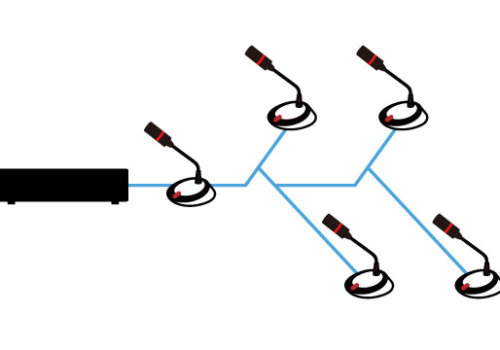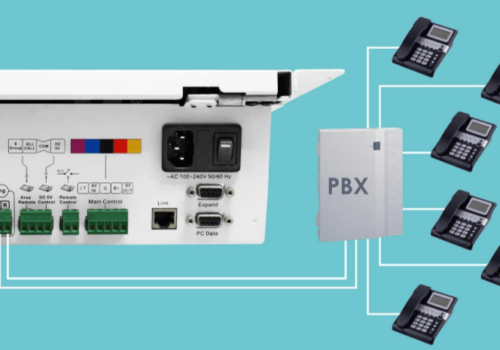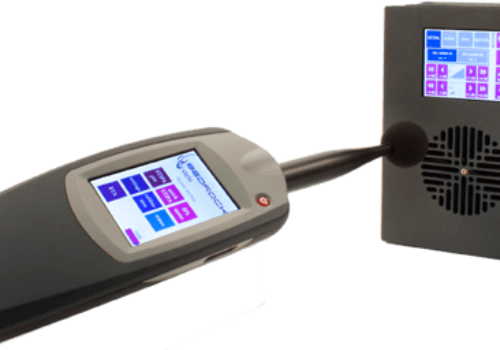Talking about an audio system, Hi-Fi home theaters are more commonly known than commercial audio systems. A commercial audio system or a public address system (PA system) is essentially different from the audio system of home theaters due to different situational applications and requirements. Many people may misunderstand the two systems. Thus, we often receive inquiries about how to effectively match amplifiers and powered speakers.
In this article, we will discuss the PA system used in office buildings, schools, stations, shopping malls, factories, and other large commercial applications from the perspective of commercial audio systems in the following three topics:
- Different types of amplifiers and their power outputs
- How to distinguish between low impedance loudspeakers and high impedance loudspeakers
- How to match amplifiers and powered speakers
Understand two power output forms of amplifiers
Low-impedance systems:
Low-impedance audio systems are also referred to low-impedance 8ohm / 4 ohm or direct-coupled amplifiers. This system adopts low voltage and high current output. Due to the high current, using professional audio cables is recommended for safety issues. The impedance is fixed, so the powered speaker must match the impedance of the amplifier output. Low impedance systems are mostly used in Hi-Fi home theaters, conference rooms, live events, and other applications. Normally, the loudspeakers in these applications are relatively close to the amplifier, and there is no need to connect a lot of powered speakers. In addition, people will request better sound quality such as the crisp high-frequency range of the tweeters and the lowest frequencies for the bass in these applications.
High-impedance systems:
High impedance audio systems are also known as 70V line/100V line or constant-voltage amplifiers. This system adopts high voltage and low current output, and the line loss is small. The distance between the powered speaker and the amplifier can be relatively long. It is easy to connect a lot of loudspeakers in parallel as long as the total power of all speakers does not exceed the total power of the amplifier. The system uses a transformer in the circuit so that the sound quality would be affected, which is not as good as the one of a low impedance system. The high impedance system is more suitable for places where sound quality is not quite demanding. It is commonly used in distributed sound systems for commercial applications like background music (BGM) or daily operational announcements in shopping malls, stations, commercial buildings, and campuses.
Low Impedance System | High Impedance System | |
Pros | Better audio quality |
|
Cons |
| Not perfect audio quality |
Applications | Not large in scale, but taking account of audio quality, such as meeting room, home theater, church, live event, etc. | Ideal for long-distance distribution of large numbers of loudspeakers with relatively low power output, such as campus, factories, stations, shopping malls, etc. |
How to choose from different types of amplifiers
Amplifier, a power amp, works by amplifying various sound signals to drive the powered speakers to emit sound. Technically, an amplifier converts alternating current to direct current and then delivers different voltages to the loudspeakers at different frequencies for sound amplification. Taking account of power, impedance, distortion, dynamic, use ranges, control functions, and application scenarios, we list three types of amplifiers.
- Pre-amplifier: it is connected between the audio source and the power amplifier. The main purpose is to amplify the voltage, play the role of signal amplification, provide the appropriate audio level signal, and adjust the sound quality. Pre-amplifiers play an important role in audio quality.
- Power amplifier: also known as post-amplifier or power amplifier. It is connected in front of the powered speakers. The main purpose is to amplify the audio signal and provide enough power to drive the powered speaker making a louder sound. This is the amplifier commonly known.
- Mixer amplifier: it combines the circuits of the preamp and power amp in the same machine. The function is a combination of the two or adding more functions, such as independent volume control, adding EQ IN/EQ OUT, etc. It enables the external professional mixers or digital audio processors to realize more comprehensive and advanced functions.
For commercial PA systems, it is more common to use power amplifiers or mixer amplifiers for high-efficient signal transmission and cost-saving. For example, in large-scale office buildings, campuses, or shopping malls, it is more appropriate to choose power amplifiers; on the other hand, for churches, conference rooms, lecture halls, etc., it is better to use mixer amplifiers.
How to distinguish between low-impedance speakers and high-impedance speakers?
Usually, it will be marked on the product label or the back cover of the loudspeaker. You can see a transformer inside the high-impedance speakers; on the contrary, low-impedance speakers don’t have any transformers. In commercial PA systems, high-impedance speakers are normally used; low-impedance speakers are more popular in home theaters, conference rooms, etc.
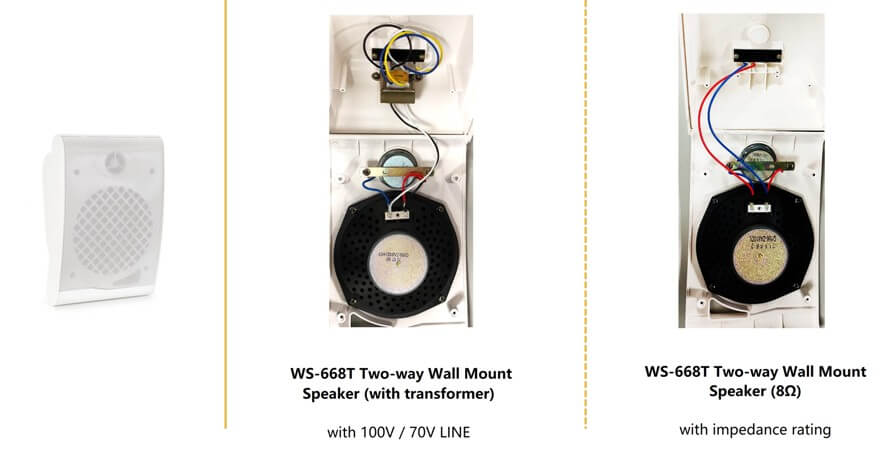
BXB WS-668/WS-668T Two-way Wall Mount Speaker (8Ω / with transformer)
The basic principle of choosing powered speakers: you can choose high-impedance speakers for long-distance wiring and large numbers of speakers. The application requires clear and effective message announcement or background music. When the wiring distance is short (normally within 10 meters) and less than 4 speakers are required, you can choose low-impedance speakers. Usually in this application scenario, there is a high standard for superior audio quality.
How to match amplifiers and powered speakers?
The choice between two systems mainly depends on where it will be used, what kind of environment, and what effect you want to achieve. Generally speaking, the constant-voltage amplifier is connected to high-impedance speakers; the constant-impedance amplifier is connected to low-impedance speakers. In meeting rooms or home theater applications, low-impedance systems are mostly used to pursue sound quality; in large-scale commercial applications, high-impedance systems are commonly used to achieve cost-effectiveness.
With the advancement of technology, many amplifiers of PA systems are now equipped with constant-voltage and constant-impedance interfaces, which can be connected to 4ohm/8ohm and 100V/70V lines at the same time. Only one amplifier can meet the requirements of meeting rooms and campuses at the same time to increase cost-effectiveness (amplifier recommendation: BXB amplifier series).
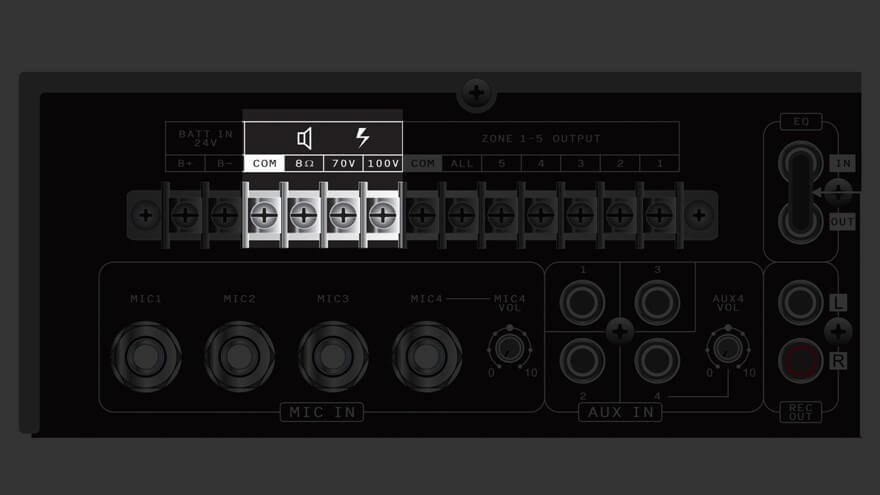
BXB PA-5120P2 240W Mixer Amplifier supports both constant-voltage and constant-impedance interfaces
Q&A about amplifiers and powered speakers
Can a high-impedance amplifier be connected to a low-impedance speaker?
The power amplifier and powered speaker cannot be mixed. The high-impedance amplifier should connect to the high-impedance speaker; the low-impedance amplifier should work with the low-impedance speaker. If the voltage signal output of the high-impedance amplifier is connected to a low-impedance speaker, there will be a risk of burning the powered speaker as the power is too large. In addition, when connecting a low-impedance speaker to an amplifier, we need to pay attention to whether the impedance of the amplifier is matched. If not matched, the speaker may burn out.
How to connect the 100V line and 70V line of the high-impedance amplifier?
When the high-impedance speaker is connected to the amplifier, there will be three interfaces used: 100V, 70V, and COM. We need to pay attention to the connection! When a 10W speaker is connected to the 100V and COM output, the speaker will work with 10W rated power. However, if the 10W speaker is connected to the 70V line (the power difference between 100V and 70V is doubled), the speaker will work with 5W only so that the volume will be relatively small.
How to apply powered speakers in various situations?
Due to the diversified commercial scenes, a speaker with an adjustable tap can be selected to meet the needs of various scenes. For example: BXB WS-8140 Waterproof Hi-Fi Column Speaker is equipped with a power tap. It can be switched to high impedance for outdoors or semi-outdoors; on the other hand, it can be switched to 6/8 ohm low impedance for indoors, such as a conference room. This can make system integration more flexible.
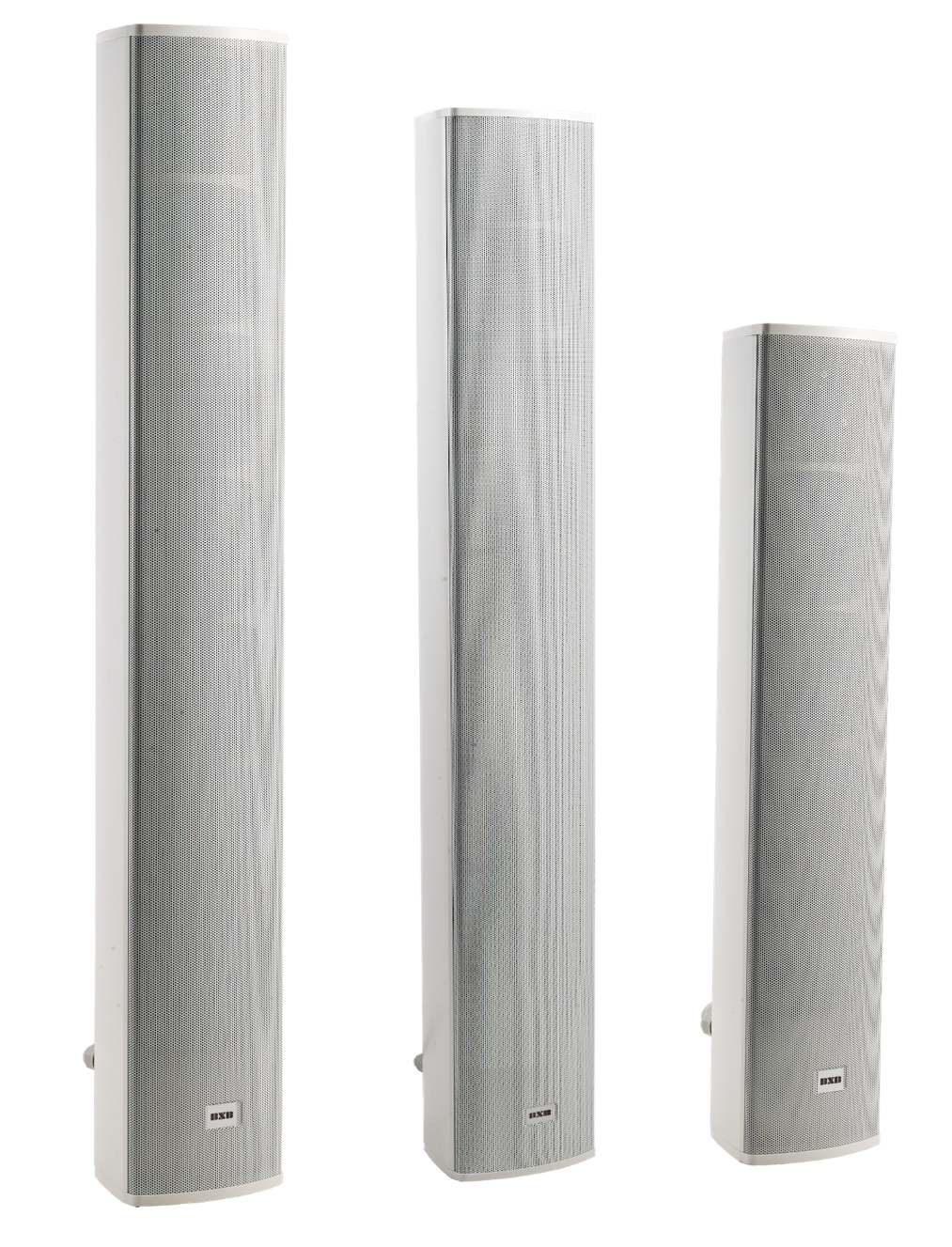
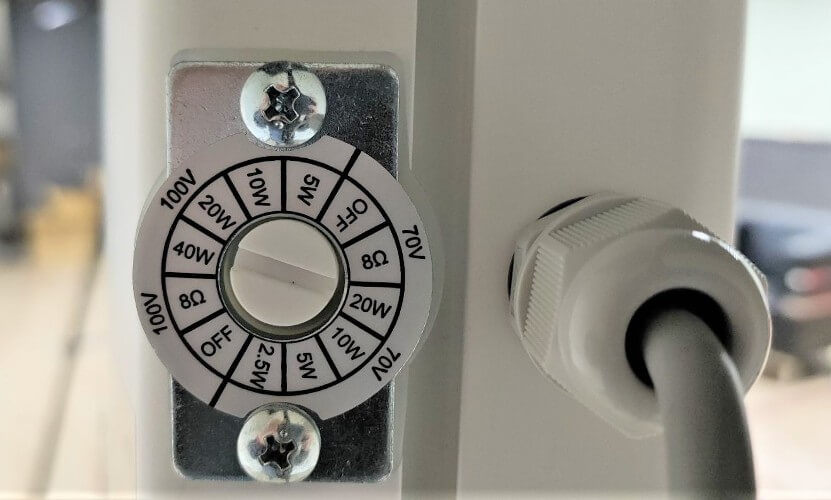
WS-8140 Waterproof Hi-Fi Column Speaker with adjustable power tap
BXB Electronics has more than 30-year experience in commercial audio systems, providing complete product lines including microphones, paging systems, public address systems, amplifiers, powered speakers, etc. BXB’s complete solution can meet various application scenarios such as classrooms, campuses, stadiums, shopping malls, factories, office buildings, etc. Also, BXB has more than 50 agencies and distributors all over the world. Welcome to contact us through the form below.

